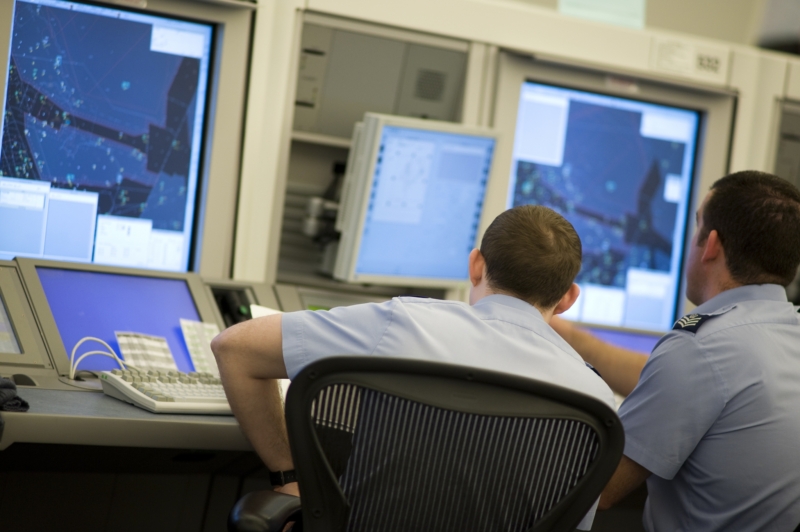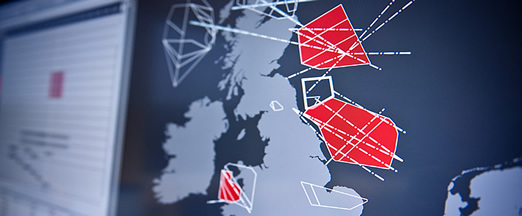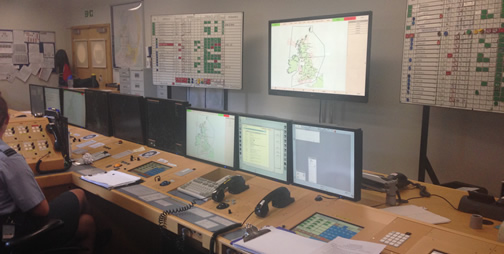Working with the military
16 June 2015The UK is one of the few countries around the world with a joint and integrated civil and military air traffic control service, with NATS and MoD controllers sitting side by side in the control centre at Swanwick, Hampshire.
This close relationship allows greater cooperation and the more flexible use of airspace. But what is the difference between civil and military ATM and how do they work together on a day to day basis?
NATS handles the civilian en-route air traffic services in the UK, managing the 2.2 million aircraft that fly through our airspace every year, to and from UK airports and over-flying the country. These aircraft are managed in a network of routes and generally fly at similar speeds following a fixed route structure.

On the military side, there are fewer aircraft to handle, but greater complexity, as there are many different types of aircraft conducting a range of different tasks across all classifications of airspace, sometime crossing busy, civilian air routes. Moreover, military controllers sometimes control both civilian aircraft (including scheduled airlines) and military aircraft of all nationalities.
The variety of aircraft and the differences between each one can make it harder for military controllers to manage certain scenarios as each aircraft could respond differently in certain circumstances. Military ATM also has the added complication of interaction with general aviation traffic, when operating outside of controlled airspace.
Day to day, both civilian and military controllers work together to ensure the safe passage of aircraft in UK skies, for example when military aircraft want to pass through controlled airspace to get to their operating areas where they can train.
The flexible use of airspace is another way in which both civilian and military controllers collaborate. This is when the military no longer need to use a danger area and alert civilian controllers so that they can re-route commercial aircraft and offer a ‘shortcut’ through this otherwise inaccessible airspace.
Not all UK airfields are fully connected to the controlled airspace structure, Teesside and Norwich for example, and military controllers will often assist with a service for aircraft en route to these airfields as they are well-practised at operating in uncontrolled airspace. Conversely, civilian controllers will also assist military aircraft on occasion when flying through controlled airspace.
During incidents of national security both side work closely together to minimise any impacts.
There is already an impressive amount of cooperation and collaboration due to the integration of both civilian and military controllers and the use of the same equipment at the control centre in Swanwick, and we look forward to even greater collaboration in the future.
Comments
Please respect our commenting policy and guidelines when posting on this website.




16.06.2015
22:36
julia mcclelland
What an interesting article. Sounds like our military colleagues are well qualiifed. Do they still have to retrain to receive civilian qualifications?
17.06.2015
17:02
Jem Dunn
General Manager LAC, Swanwick AC OperationsHi Julia,
Thanks for commenting. The military controllers’ qualifications are not fully recognised under the civil European Common Licence requirements and, therefore, they would need to retrain. I hope that helps.
Jem
17:02
Jem Dunn
General Manager LAC, Swanwick AC Operations